Make a delicious Dutch Baby Pancake this weekend! With these tips and tricks, your cakes will be fluffy and impress your family with ohhs and ahhs!
A dutch baby is a seemingly magical breakfast or brunch recipe! With simple ingredients like milk, eggs, and flour, you can create an amazing soufflé like cake that serves a crowd! Ready? Let’s get cookin!
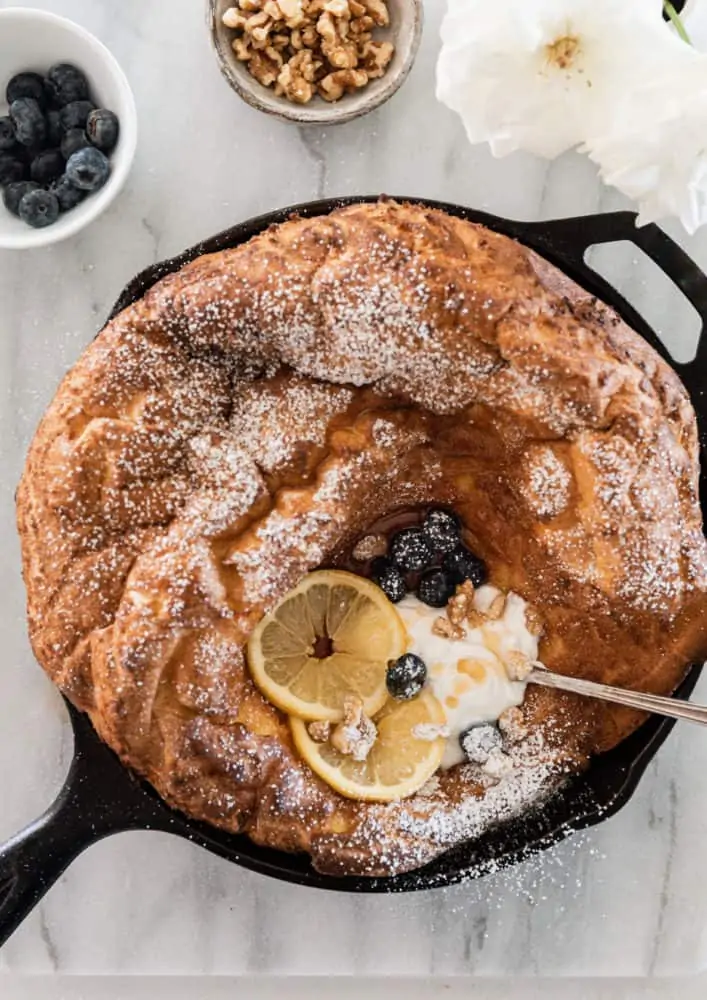
The Perfect Dutch Baby Pancake Recipe
It was instagram that set me in pursuit of Dutch Baby perfection. I saw many influencers making this yummy weekend treat, and it *influenced me* to create a tried and true no-fail Dutch Pancake recipe!
I will tell you, it took me three times to get this recipe just right. While this recipe is quite easy to put together, there are a few crucial steps one must take for the absolute best Dutch Baby Pancakes!
If this is your first time making this delicious brunch staple, be sure to read through all of my tips and tricks so that you can get it right on the first try. Save yourself time and money and learn from my mistakes ;).
There are some important steps to take such as the blender, skillet, oven temperature, and ingredients. This post will help you make a delicious Dutch Baby with ease!
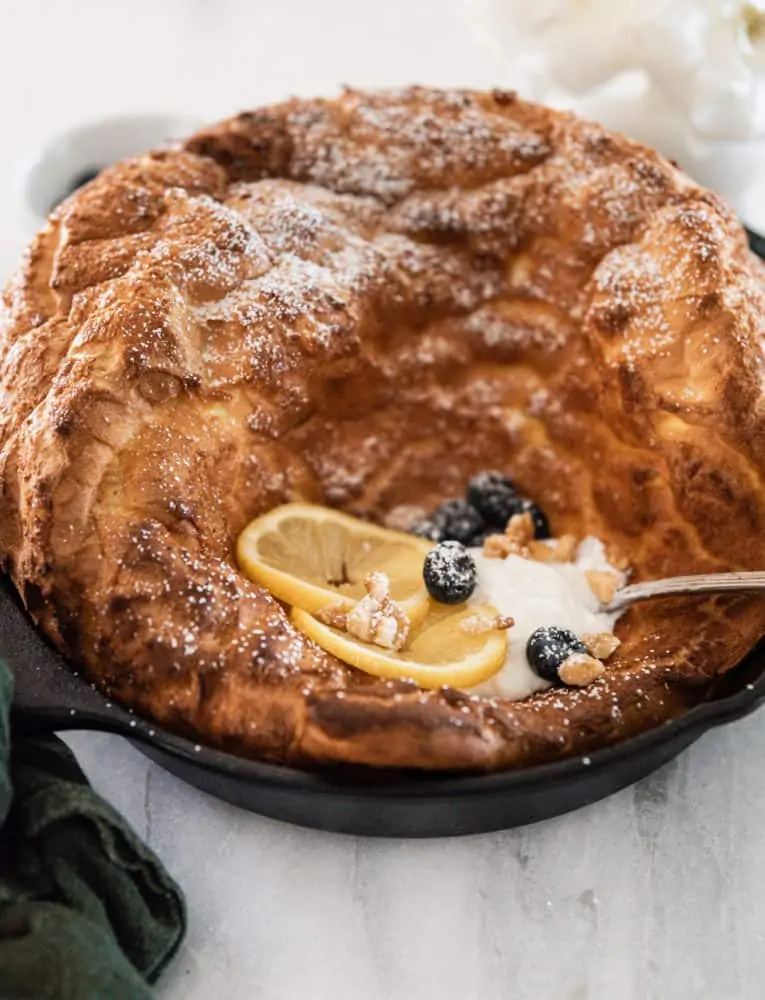
What are Dutch Pancakes?
Dutch Pancakes are made of eggs, milk, salt, and flour. The batter is baked in a hot cast iron skillet that is coated with melted butter. Sugar, vanilla, or other flavorings can also be added to the batter.
Most commonly served as a breakfast and topped with syrup, fruit, lemon, yogurt, nuts, and powdered sugar. However, savory Dutch babies are a delicious brunch or lunch idea! Try topping them with ham, cheese, and vegetables.
It turns out, Dutch Pancake batter is very similar to that of a classic French crepe! Made with eggs, milk, butter, and flour.
However a Dutch Baby is different than that of a crepe or pancake in that it is cooked in a hot cast iron skillet and baked in the oven, causing it to puff up and put on quite a show.
In fact, a Dutch Pancake is more similar to a popover, Æbleskiver, or Yorkshire pudding. Popovers are generally baked in individual serving dishes and Yorkshire pudding is most commonly a savory dish as it is made with Beef drippings rather than butter and doesn’t have sugar added to it.
Dutch Pancakes are said to have originated at a family run cafe in Seattle, Washington. They were an adaptation of a German pancake dish, and are not actually of Dutch origin. Very interesting!
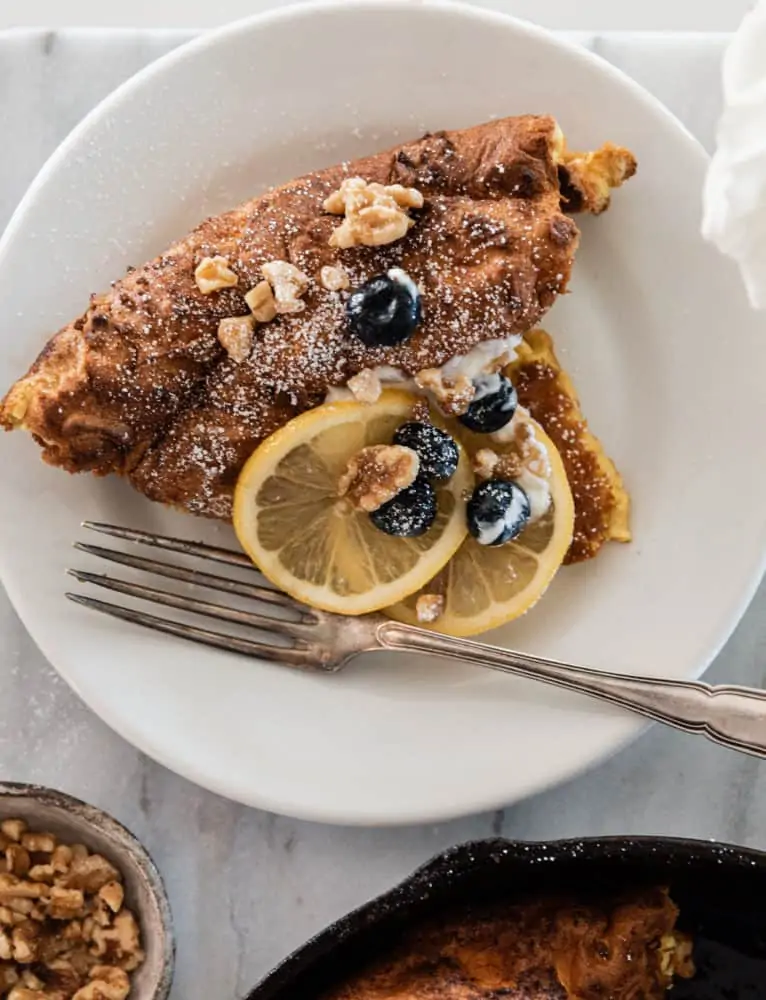
Ingredients
- Eggs: This is an egg heavy dish. The eggs act as the main binding agent as well as add to the puff factor. I have found 3 eggs creates the perfect puffy pancake.
- Milk: Milk creates a nice tender pancake, and the protein in milk adds structure to the batter.
- Vanilla: For taste, optional. If making a savory pancake, skip.
- Salt: I love the combination of salty & sweet. The salt balances out the flavors wonderfully.
- Sugar: I like to add a little sugar to my dutch pancakes to sweeten them and add a bit of caramelization. If you’re creating a savory pancake, you can skip. It is optional.
- Flour: Gluten baby! The protein in flour provides structure and the gluten created when combined with the milk adds elasticity to the cakes.
- Butter: The butter coats the hot skillet and adds fat to the batter. It also creates a delicious crispy crust on the bottom of the pancake.
How to Make a Dutch Pancake
- Start by pre-heating your oven to 425 F, place the skillet in the oven so it heats up with the oven. This is important!
- Combine the eggs, milk, vanilla, sugar, salt, and flour in a mixing bowl or the bowl of a blender / food-processor. Mix well using a blender, food processor, or immersion blender. Alternatively, a hand whisk can be used (see notes below).
- Allow the batter to rest while the oven comes to temperature, about 10 minutes.
- Remove the skillet from the oven, place the butter in the hot skillet and swirl the skillet in circles so that the melted butter coats the sides.
- Pour the batter into the hot skillet and place back in the oven. Cook for 15 minutes.
- Reduce the heat to 350 F and bake until the pancake is puffed up and golden. 5-10 minutes more.
- Once cooked, remove from the oven and dust with powdered sugar and fresh fruit. Enjoy while still hot and puffed up.
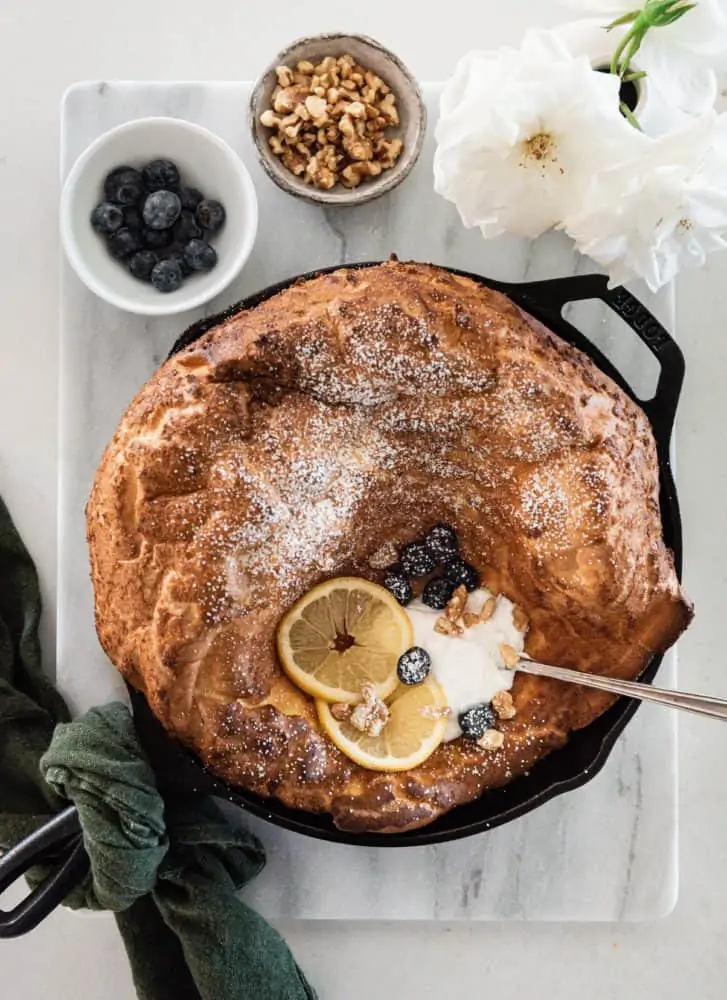
Cast Iron Skillet
A cast iron skillet is an important kitchen necessity, I definitely suggest investing in one! If you don’t own one, you can use a metal pie dish or oven-proof frying pan. I recommend a 10″ skillet for this recipe.
You can also use a glass pie dish, but metal is truly the best option for this recipe. It’s also what I recommend cooking a frittata recipe in!
Just like when making a homemade burger, the cast iron skillet retains heat wonderfully and provides an even cooking surface for the pancake. Remember, the high heat is essential for getting that instagram worthy puff!
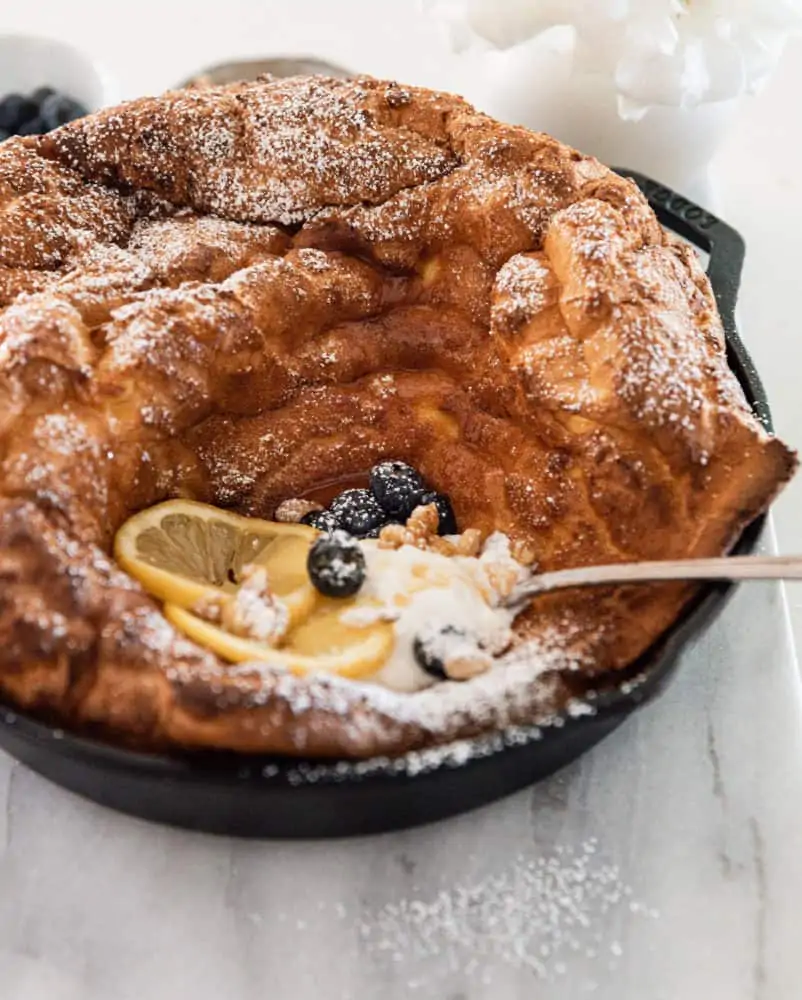
Why didn’t my dutch baby puff up?
The infamous *puff* of the Dutch pancake comes from steam. Steam is created from air within the batter and heat from the oven.
In order to get your dutch baby pancake to puff up, you need both: heat and air.
Don’t Skip The Blender
I get it, no one really wants to drag out the blender or food processor to make pancakes, but in the case of dutch baby pancakes, I have found it’s actually pretty necessary.
The air comes from a vigorous whisk of the batter, which is most easily done in a blender or food processor. I like to use my hand blender (immersion blender) – so much easier to clean!
If you are averse to bringing out the blender, you can certainly whisk vigorously by hand to integrate air into the batter. Whisk for a good 3-5 minutes.
Once the batter has blended, set it aside for about 10 minutes to give the gluten and proteins a rest. Then right before pouring it into the pan, give it one or two more whirls.
Tip: For even fluffier pancakes, let the batter rest overnight. Store in an airtight container in the refrigerator overnight until ready to use.
To drive my point home, a side by side comparison. On the left, the batter was not blended. On the right, the batter was blended. The results speak for themselves.
Batter not blended. Batter blended.

Dutch Baby Pancake Tips
- A Hot Skillet: Don’t forget to pre-heat the skillet along with the oven. Place the skillet inside the oven as it heats so that the skillet comes out nice and hot and ready to cook your pancake.
- A Hot Oven: The oven should be 425 F when you first place your dutch baby inside. DO NOT OPEN THE OVEN ONCE THE PANCAKE IS INSIDE!! You’ll let all the precious steam out ;).
- Let the batter rest: The gluten will form once the flour and milk are combined, allow it to fully develop by letting the batter rest. You can even make the batter the night before. If doing so, be sure to give it a good whisk or whirl in the blender before cooking.
- Blend the Ingredients: The photo illustration above shows what blending vs. not blending the batter looks like. The same recipe, the same oven, the same skillet – wildly different results. I highly recommend blending. An immersion blender is a great option!
- I repeat, don’t open the oven: Once you’ve placed the skillet inside the oven to cook, resist opening it. The steam is essential to a puffy Dutch baby, you want to keep all that moisture in the oven!
- The puff happens in the last few minutes: Pull it out right when it’s puffed up and golden, the puff happens during the last few minutes of baking.

If you love this recipe, I think you’ll also enjoy my strawberry muffins recipe or my blueberry and lemon scones!
The Recipe
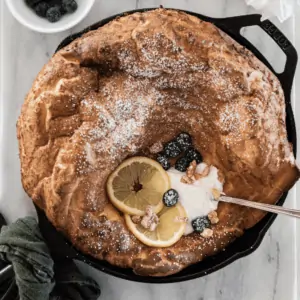
Dutch Baby Pancake
Equipment
Ingredients
- 1/2 cup whole milk
- 3 eggs room temperature
- 1/4 teaspoon kosher salt
- 1 teaspoon pure vanilla extract
- 1/2 tablespoon granulated sugar
- 1/2 cup all-purpose flour
- 3 tablespoons salted butter room temperature
Instructions
- Pre-heat oven to 425 F, place a 10" cast iron skillet in the oven so it heats up with the oven.
- Prepare the batter: combine the eggs, milk, vanilla, sugar, salt, and flour in a mixing bowl or the bowl of a blender / food-processor. Mix well using a blender, food processor, or immersion blender. Alternatively, a hand whisk can be used (see notes below).
- Allow the batter to rest while the oven comes to temperature, at least 10 minutes.
- Remove the skillet from the oven, place the butter in the hot skillet and swirl in circles so that the melted butter coats the sides.
- Give the batter one more whirl in the blender or food processor (or a couple of good whisks). Pour the batter into the hot skillet and place back in the oven. Cook for 15 minutes undisturbed.
- Reduce the heat to 350 F and bake until the pancake is puffed up and golden. 5-10 minutes more.
- Once cooked, remove from the oven and dust with powdered sugar, fresh fruit, or other deisred toppings. Enjoy while still hot and puffed up.
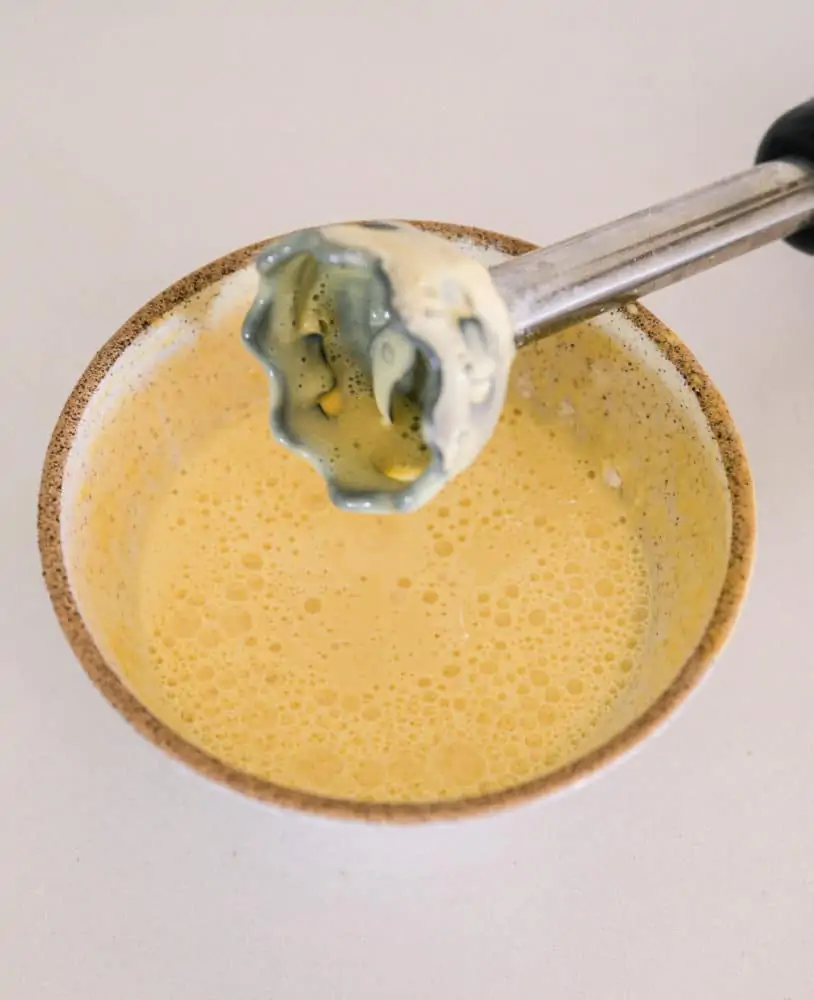
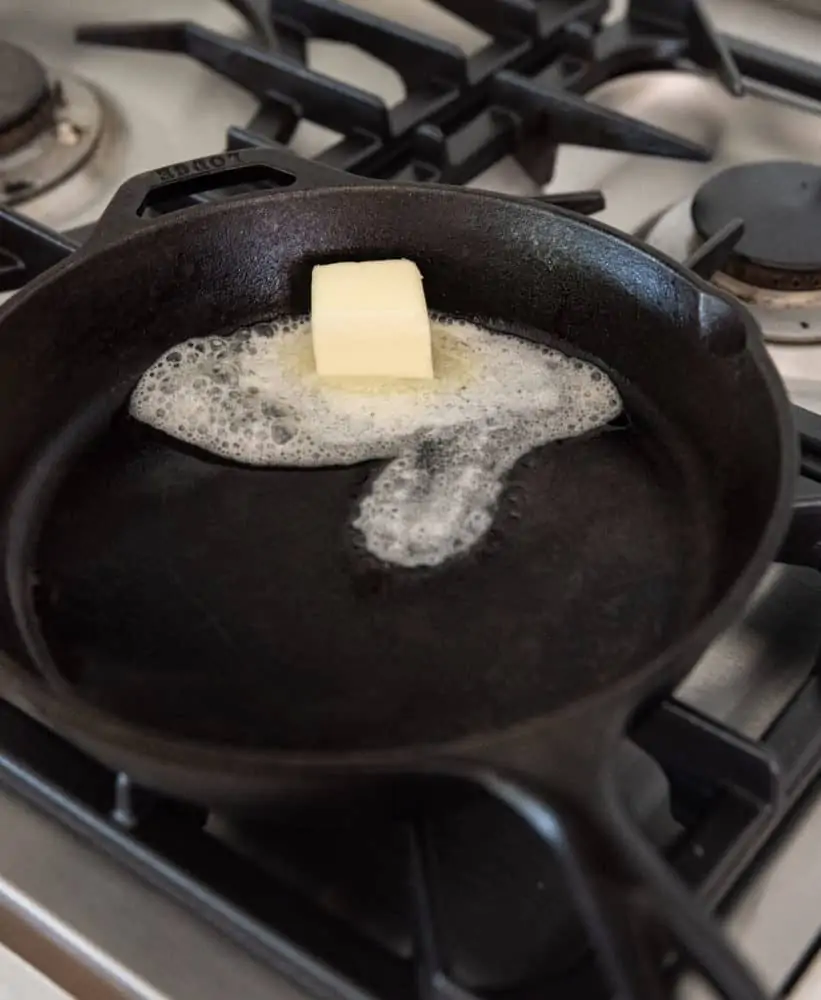
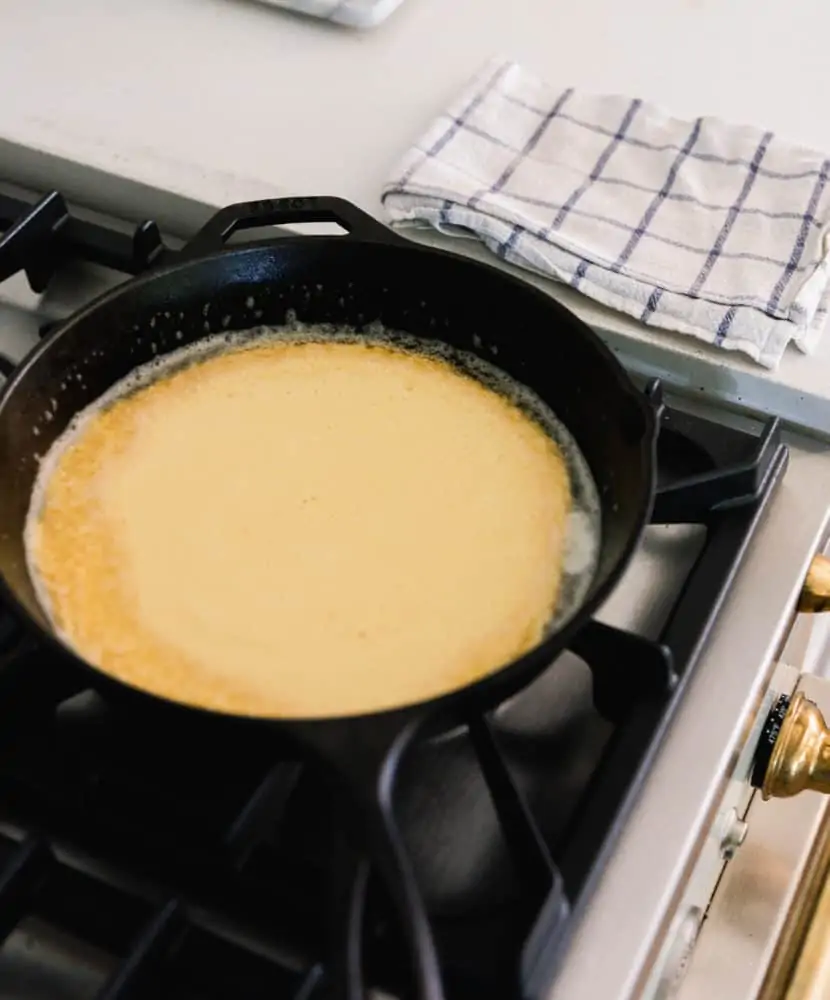
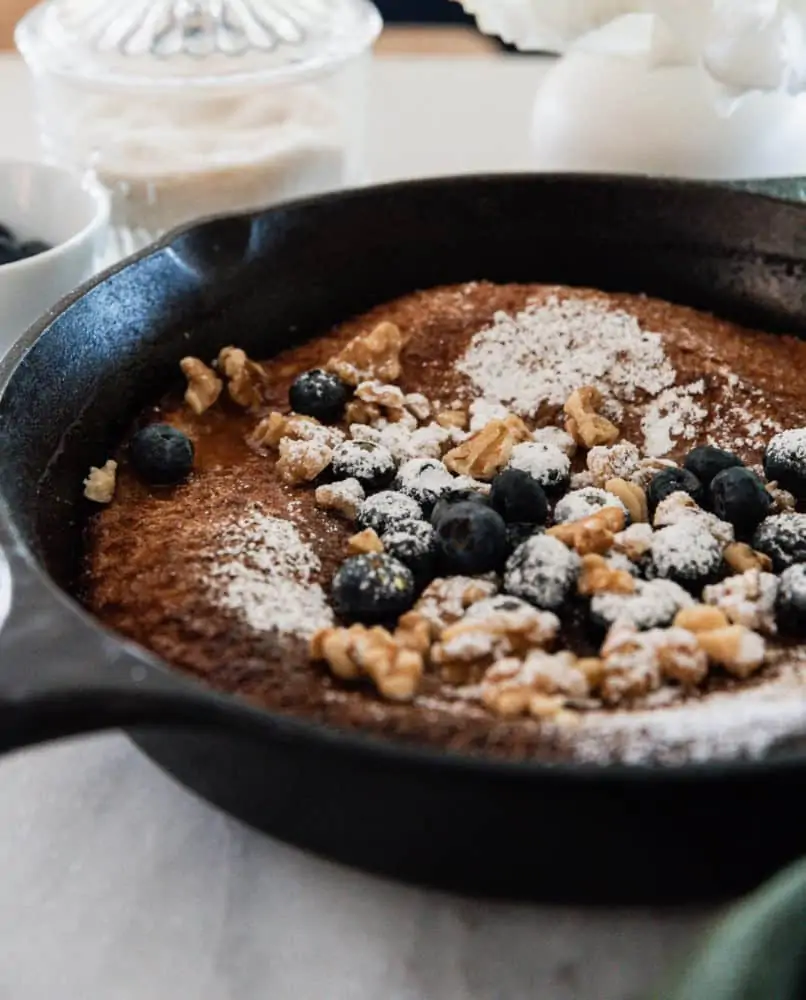
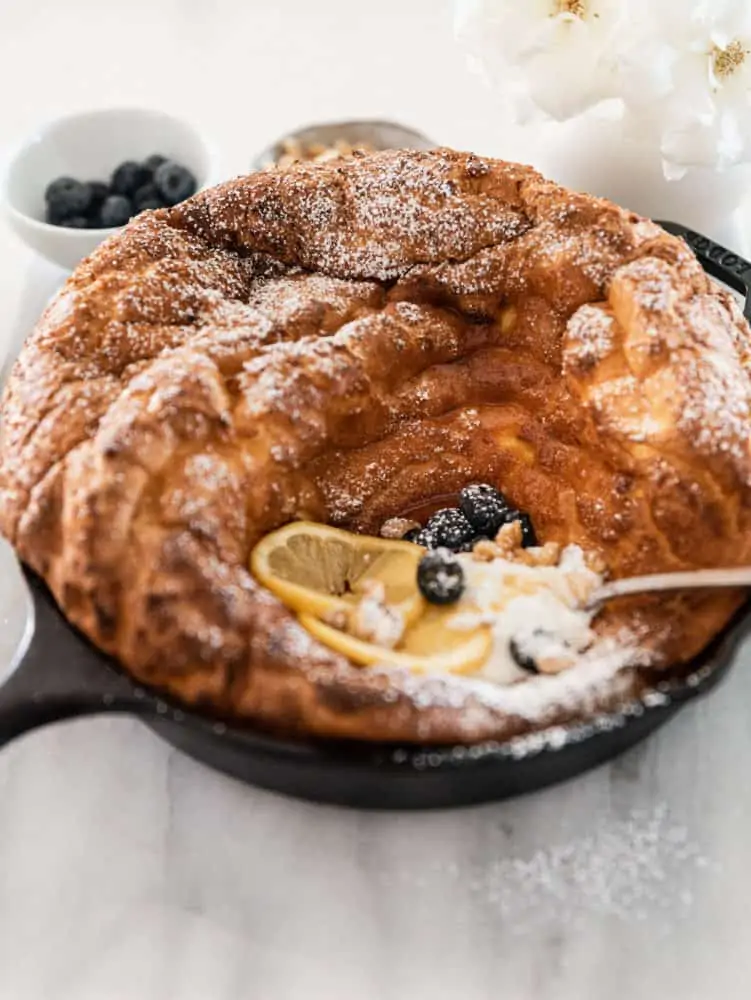
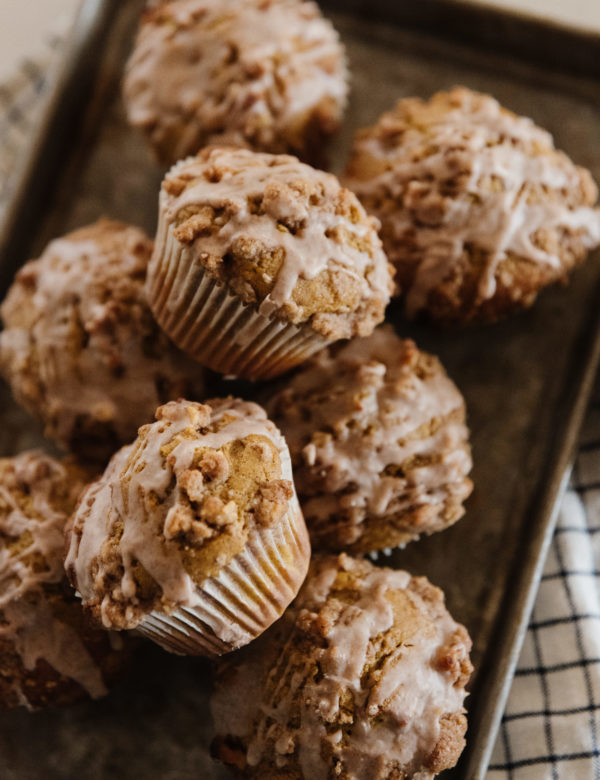
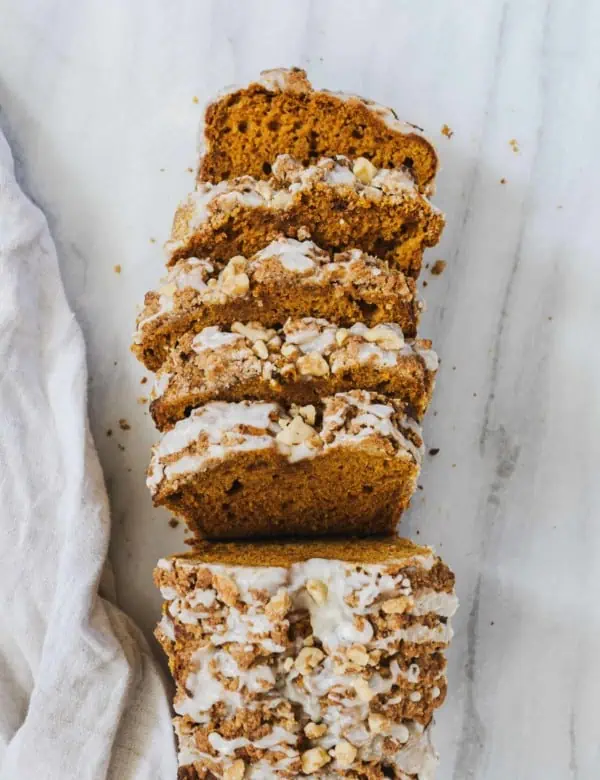
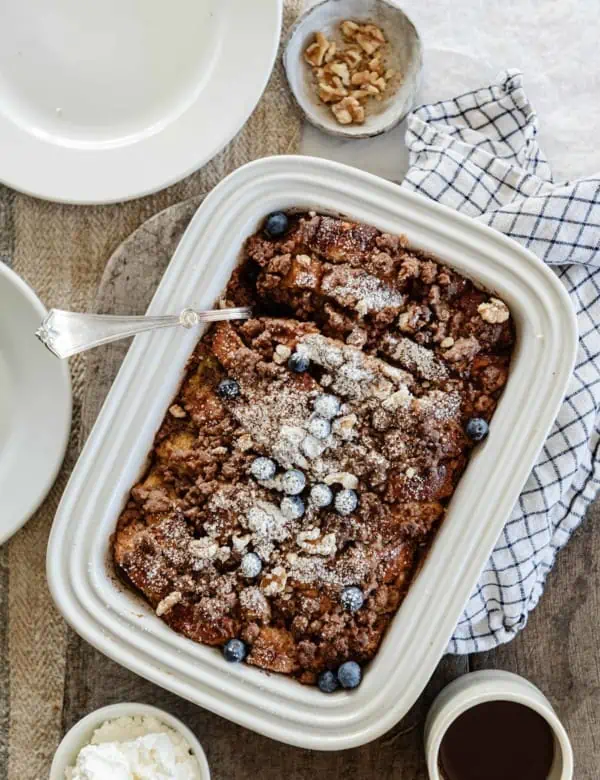
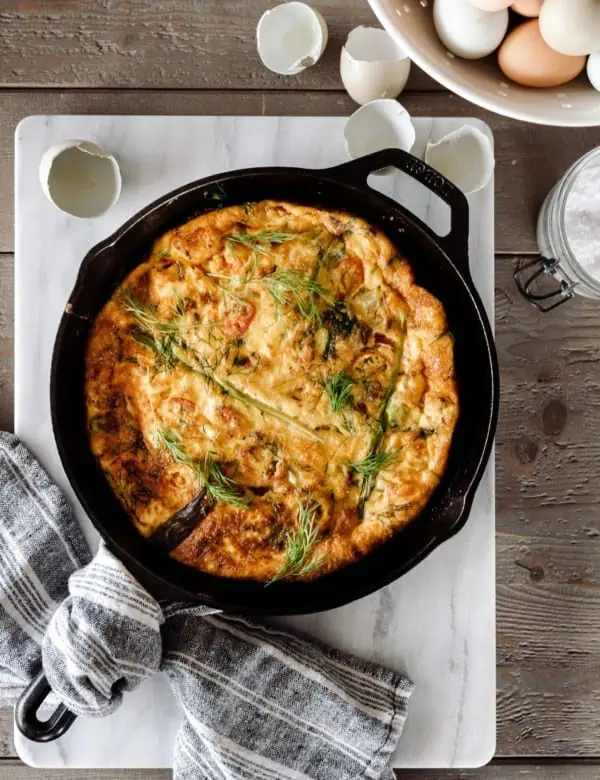
I think you should write a article about wholesale diapers this will be very helpful.